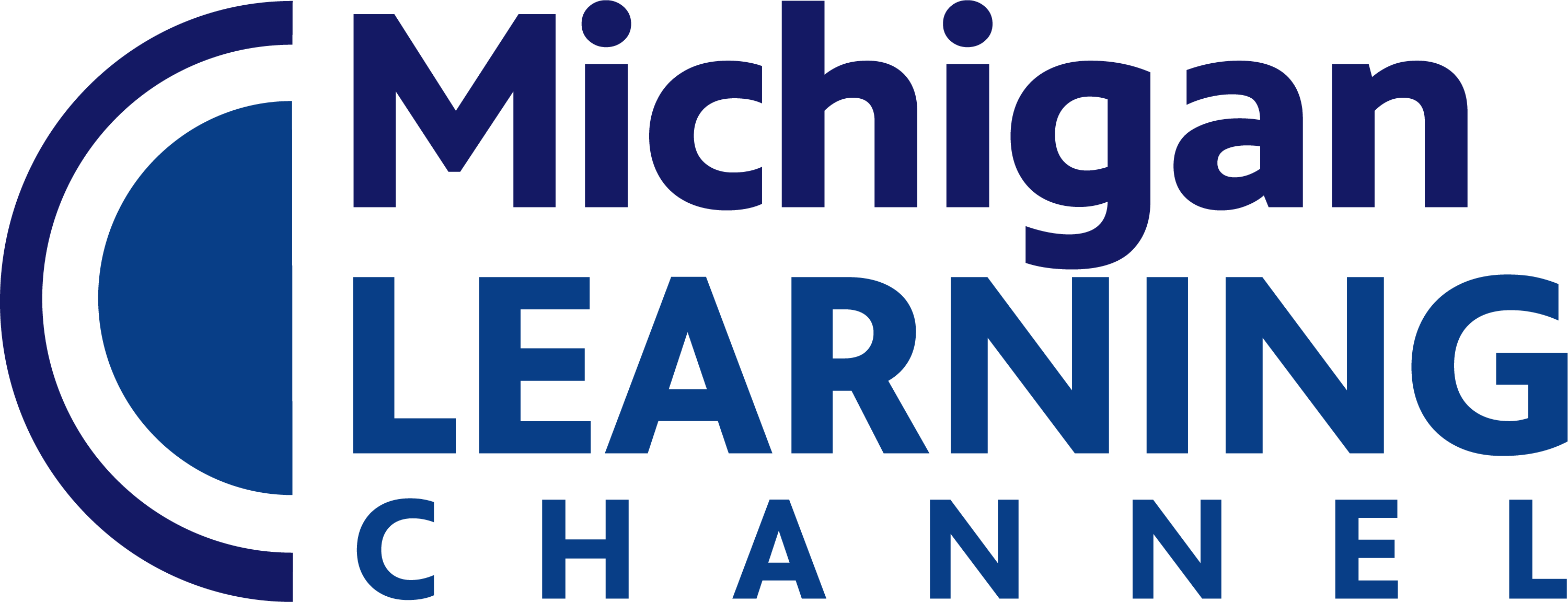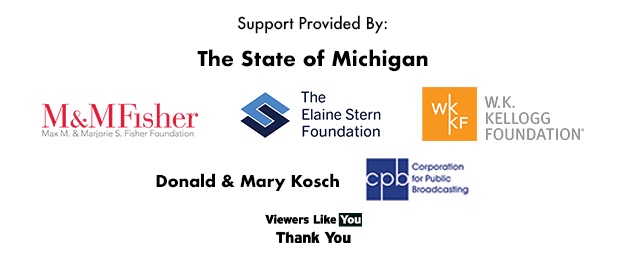Subjects
Shows
Perform music using instruments (traditional and non-traditional) and electronic media.
Sight read accurately and expressively, music with a moderate level of difficulty.
Improvise rhythmic and melodic variations given pentatonic melodies, and melodies in major and minor keys.
Improvise original melodies over given chord progressions, each in a consistent style, meter, and tonality.
Compose music in several different styles, demonstrate creativity in using the elements of music for expressive effect.
Arrange pieces for voices or instruments, other than those for which the pieces were written, in ways that preserve or [...]
Compose and arrange music for voices and various acoustic and electronic instruments, demonstrating knowledge of the ranges and traditional usage [...]
Demonstrate extensive knowledge and use of the technical vocabulary of music.
Analyze aural examples of a varied repertoire of music, representing diverse genres and cultures, by describing the uses of elements [...]
Identify and explain compositional devices and techniques and their purposes, giving examples of other works that make similar uses of [...]
Make informed, critical evaluations of the quality and effectiveness of performances, compositions, arrangements, and improvisations applying specific criteria.
Evaluate a I. Performance, composition, arrangement, or improvisation by comparing it to similar or exemplary models.
Through brief dances, demonstrate understanding of structures or forms such as palindrome, theme and variation, rondo, round, as well as [...]
Choreograph a duet demonstrating an understanding of choreographic principles, processes, and structures.
Create a dance that effectively communicates a contemporary social theme.
Create a dance and revise it over time using multi-media equipment, such as slides, camera, video, and computers to articulate [...]
Reflect on and describe how movement choices communicate abstract ideas in dance.
Create a dance and revise it over time, articulating the reasons for artistic decisions, and what was lost and gained [...]
Establish a set of aesthetic criteria and apply it in evaluating their own work and that of others.
Formulate and answer their own aesthetic questions; e.g., what is it that makes a particular dance that dance? How much [...]
Explain how personal experience influences the interpretation of a dance.
Perform and describe similarities and differences between two contemporary theatrical forms of dance.
Perform or discuss the traditions and techniques of a classical dance form.
Demonstrate understanding of how personal experience influences the interpretation of a dance.
Effectively communicate how lifestyle choices; e.g., exercise, diet, habits, affect the dancer.
Create an inter-disciplinary project based on a theme identified by the student, including dance and two other disciplines, such as [...]
Clearly identify commonalities and differences between dance and other disciplines with regard to fundamental concepts, such as materials, elements, and [...]
Demonstrate and discuss how technology can be used to reinforce, enhance, or alter the dance idea in an inter-disciplinary project.
Demonstrate reflection upon personal progress and growth during one’s own study in each of the arts disciplines.
Demonstrate appropriate skeletal alignment, body-part articulation, strength, flexibility, agility, and coordination in locomotor and non-locomotor/axial movements.
Identify and demonstrate longer and more complex steps and patterns from two different dance styles/traditions.
Demonstrate the ability to remember and perform extended movement sequences.
Create and erform combinations and variations in a broad dynamic range.
Use varied transitions and sentence structures to link the major sections of the text, create cohesion, and clarify the relationships [...]
Use precise language and domain-specific vocabulary to manage the complexity of the topic and convey a style appropriate to the [...]
Establish and maintain a formal style and objective tone while attending to the norms and conventions of the discipline in [...]
Provide a concluding statement or section that follows from and supports the information or explanation presented (e.g., articulating implications or [...]
Produce clear and coherent writing in which the development, organization, and style are appropriate to task, purpose, and audience.
Develop and strengthen writing as needed by planning, revising, editing, rewriting, or trying a new approach, focusing on addressing what [...]
Use technology, including the Internet, to produce, publish, and update individual or shared writing products, taking advantage of technology’s capacity [...]
Conduct short as well as more sustained research projects to answer a question (including a self-generated question) or solve a [...]
Subjects
Shows
Perform music using instruments (traditional and non-traditional) and electronic media.
Sight read accurately and expressively, music with a moderate level of difficulty.
Improvise rhythmic and melodic variations given pentatonic melodies, and melodies in major and minor keys.
Improvise original melodies over given chord progressions, each in a consistent style, meter, and tonality.
Compose music in several different styles, demonstrate creativity in using the elements of music for expressive effect.
Arrange pieces for voices or instruments, other than those for which the pieces were written, in ways that preserve or [...]
Compose and arrange music for voices and various acoustic and electronic instruments, demonstrating knowledge of the ranges and traditional usage [...]
Demonstrate extensive knowledge and use of the technical vocabulary of music.
Analyze aural examples of a varied repertoire of music, representing diverse genres and cultures, by describing the uses of elements [...]
Identify and explain compositional devices and techniques and their purposes, giving examples of other works that make similar uses of [...]
Make informed, critical evaluations of the quality and effectiveness of performances, compositions, arrangements, and improvisations applying specific criteria.
Evaluate a I. Performance, composition, arrangement, or improvisation by comparing it to similar or exemplary models.
Through brief dances, demonstrate understanding of structures or forms such as palindrome, theme and variation, rondo, round, as well as [...]
Choreograph a duet demonstrating an understanding of choreographic principles, processes, and structures.
Create a dance that effectively communicates a contemporary social theme.
Create a dance and revise it over time using multi-media equipment, such as slides, camera, video, and computers to articulate [...]
Reflect on and describe how movement choices communicate abstract ideas in dance.
Create a dance and revise it over time, articulating the reasons for artistic decisions, and what was lost and gained [...]
Establish a set of aesthetic criteria and apply it in evaluating their own work and that of others.
Formulate and answer their own aesthetic questions; e.g., what is it that makes a particular dance that dance? How much [...]
Explain how personal experience influences the interpretation of a dance.
Perform and describe similarities and differences between two contemporary theatrical forms of dance.
Perform or discuss the traditions and techniques of a classical dance form.
Demonstrate understanding of how personal experience influences the interpretation of a dance.
Effectively communicate how lifestyle choices; e.g., exercise, diet, habits, affect the dancer.
Create an inter-disciplinary project based on a theme identified by the student, including dance and two other disciplines, such as [...]
Clearly identify commonalities and differences between dance and other disciplines with regard to fundamental concepts, such as materials, elements, and [...]
Demonstrate and discuss how technology can be used to reinforce, enhance, or alter the dance idea in an inter-disciplinary project.
Demonstrate reflection upon personal progress and growth during one’s own study in each of the arts disciplines.
Demonstrate appropriate skeletal alignment, body-part articulation, strength, flexibility, agility, and coordination in locomotor and non-locomotor/axial movements.
Identify and demonstrate longer and more complex steps and patterns from two different dance styles/traditions.
Demonstrate the ability to remember and perform extended movement sequences.
Create and erform combinations and variations in a broad dynamic range.
Use varied transitions and sentence structures to link the major sections of the text, create cohesion, and clarify the relationships [...]
Use precise language and domain-specific vocabulary to manage the complexity of the topic and convey a style appropriate to the [...]
Establish and maintain a formal style and objective tone while attending to the norms and conventions of the discipline in [...]
Provide a concluding statement or section that follows from and supports the information or explanation presented (e.g., articulating implications or [...]
Produce clear and coherent writing in which the development, organization, and style are appropriate to task, purpose, and audience.
Develop and strengthen writing as needed by planning, revising, editing, rewriting, or trying a new approach, focusing on addressing what [...]
Use technology, including the Internet, to produce, publish, and update individual or shared writing products, taking advantage of technology’s capacity [...]
Conduct short as well as more sustained research projects to answer a question (including a self-generated question) or solve a [...]


